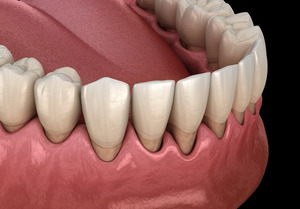
When gum disease is left untreated, it can lead to all kinds of problems. Notably, it can result in gum recession, which is when gum tissue pulls away from the teeth, leaving the roots more vulnerable to bacteria as well as foods that can trigger sensitivity. Your periodontist is likely to recommend treating your gum disease with scaling and root planing, but will that allow the gum tissue lost to gum recession to grow back? Here’s what you need to know before having the procedure performed.
How Does Scaling and Root Planing Work?
For the scaling step, your periodontist will examine the area beneath your gum line looking for plaque and tartar. The goal is to get rid of these substances so that they can no longer contribute to your gum disease. After that comes root planing, which is the process of smoothing out the surfaces of the roots of your teeth – an essential step for encouraging the reattachment of the gum tissue.
Can Scaling and Root Planing Help Your Gums Grow Back?
Unfortunately, the answer is no. Once gum tissue has been lost, it’s gone for good. As such, if you have experienced gum recession, your gums will not regenerate even after scaling and root planing have been performed.
Fortunately, that doesn’t mean that there isn’t anything you can do to reverse the damage. In cases where significant gum recession has occurred, your dentist is likely to suggest gum grafting. This is where tissue is taken from elsewhere in your mouth and used to cover your exposed tooth roots. There are different types of grafts that might be performed depending on the circumstances; your periodontist can go over the details with you before you need to make any commitments.
How Should You Have Gum Disease Treated?
Should you have scaling and root planing performed in the near future? Will gum grafting be necessary to reverse the damage that has already been done? The answers to these questions can vary from patient to patient based on the severity of their gum disease.
Fortunately, you don’t have to figure out the appropriate form of treatment by yourself. Your periodontist can take a look at your gums, consider your symptoms, and explain what treatment options best suit your situation.
The sooner you have the symptoms of your gum disease addressed, the better. As soon as you notice signs of gum recession – or any other symptoms associated with gum disease – call your periodontist right away to schedule a consultation.
About the Author
Dr. David Handsman is a highly regarded member of the periodontal community, and he has been named a Diplomate of the American Board of Periodontology. Not only does he offer scaling and root planing for treating gum disease, but he can also address gum recession with gum grafting. To schedule a consultation with Dr. Handsman at Handsman & Haddad Periodontics in Worcester, visit his website or call (508) 753-5444.

